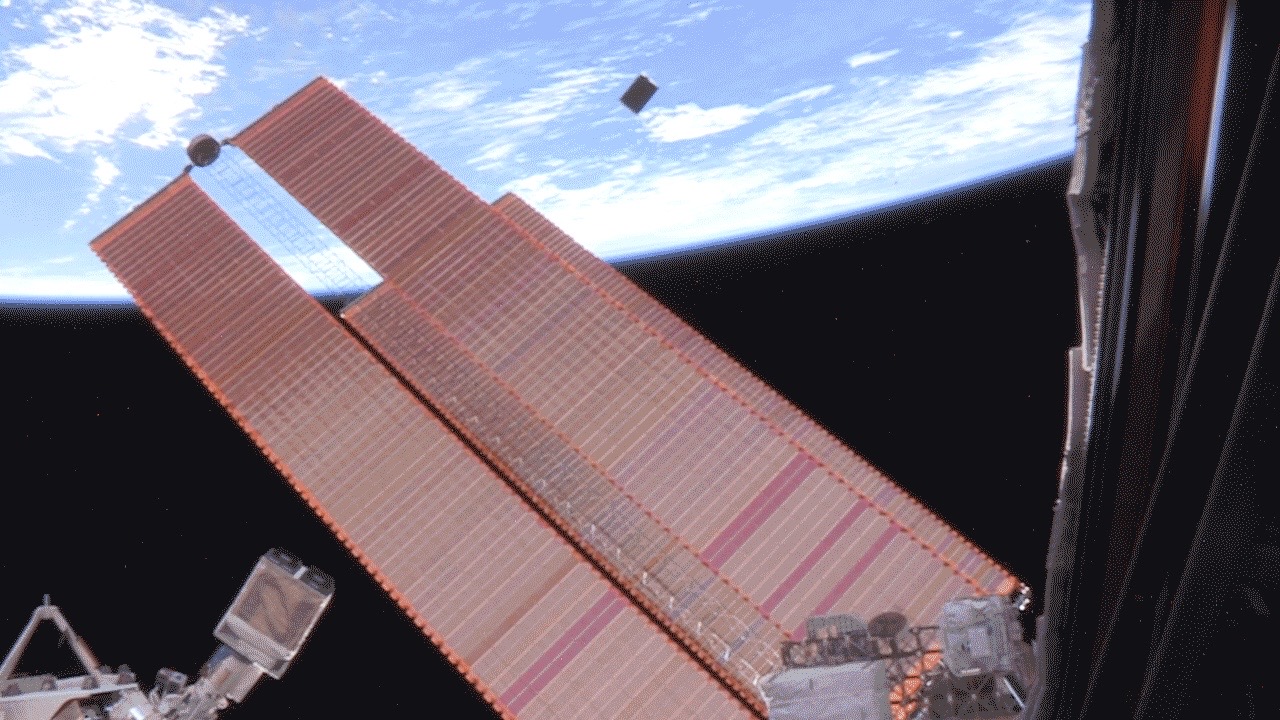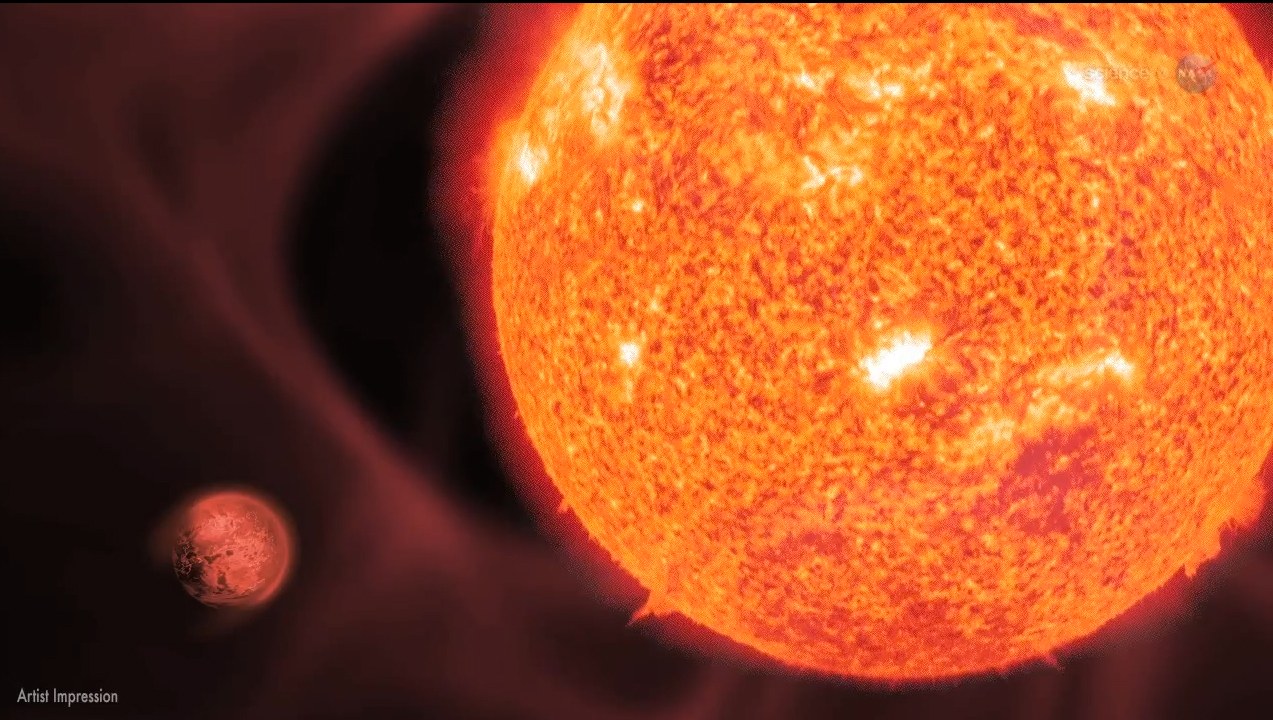
A satellite the size of a briefcase successfully detected an alien world, potentially paving the way for a future network of tiny planet-hunting spacecraft.
The Arcsecond Space Telescope Enabling Research in Astrophysics (ASTERIA) cubesat, which was deployed into Earth orbit from the International Space Station in November 2017, spotted the exoplanet 55 Cancri e, a new study reports.
The little cubesat didn't discover some previously unknown world. 55 Cancri e, a scorching-hot planet about twice the size of Earth that lies 40 light-years from our solar system, was first found in 2004.
Related: The strangest alien planets (gallery)

Indeed, ASTERIA team members targeted 55 Cancri e as a way to test the abilities of their spacecraft, a technology demonstration designed to show that small satellites can make significant contributions to exoplanet research.
One of the main technologies ASTERIA demonstrated was fine pointing control, a necessity for any spacecraft that studies alien worlds. Exoplanets are quite small in the cosmic scheme of things, and satellites that study them need to stay locked on a narrow patch of space for long stretches, which is a challenge for cubesats.
ASTERIA used its 2.4-inch-wide (6 centimeters) telescope to monitor the light emanating from 55 Cancri, the parent star of 55 Cancri e. These measurements eventually revealed a tiny but telltale dip in starlight caused by the planet's passage across the star's face. (This planet-hunting strategy, called the "transit method," has been used by a number of other missions, including NASA's prolific Kepler space telescope.)
Get the Space.com Newsletter
Breaking space news, the latest updates on rocket launches, skywatching events and more!
And "tiny" is the right word here; 55 Cancri e blocked just 0.04% of the host star's light when it moved across the stellar disk from ASTERIA's perspective, mission team members said.
ASTERIA's observations allowed the scientists to make a "marginal detection" of 55 Cancri e. The cubesat's data alone would not have been sufficient to confirm the planet's existence had it been unknown previously. But the team determined they had indeed spotted 55 Cancri e's signal by studying measurements of the system made by other instruments.
"We went after a hard target with a small telescope that was not even optimized to make science detections — and we got it, even if just barely," Mary Knapp, ASTERIA project scientist at the Massachusetts Institute of Technology's (MIT) Haystack Observatory, said in a statement.
Knapp is also lead author of the new study reporting the 55 Cancri e results. The study has been accepted for publication in The Astronomical Journal; you can read a preprint of it for free at arXiv.org.
"I think this paper validates the concept that motivated the ASTERIA mission: that small spacecraft can contribute something to astrophysics and astronomy," Knapp said.
ASTERIA was a joint project between MIT and NASA's Jet Propulsion Laboratory (JPL) in Pasadena, California. The cubesat was originally designed to work for just 90 days, but the little spacecraft ended up operating for far longer; ASTERIA's mission didn't officially end until February of this year.
"This mission has mostly been about learning," Akshata Krishnamurthy, co-investigator and science data analysis co-lead for ASTERIA at JPL, said in the same statement. "We've discovered so many things that future small satellites will be able to do better because we demonstrated the technology and capabilities first. I think we've opened doors."
Some of the satellites flying through those open doors may be ASTERIA's descendants. ASTERIA principal investigator Sara Seager, an astrophysicist at MIT, recently received a NASA grant to develop a concept for a follow-on mission. "The proposal describes a constellation of six satellites about twice as big as ASTERIA that would search for exoplanets similar in size to Earth around nearby sunlike stars," NASA officials wrote in the same statement.
- Cubesats: Tiny, versatile spacecraft explained (infographic)
- Oozing super-Earth: Images of alien planet 55 Cancri e
- 7 ways to detect alien planets
Mike Wall is the author of "Out There" (Grand Central Publishing, 2018; illustrated by Karl Tate), a book about the search for alien life. Follow him on Twitter @michaeldwall. Follow us on Twitter @Spacedotcom or Facebook.
OFFER: Save 45% on 'All About Space' 'How it Works' and 'All About History'!
For a limited time, you can take out a digital subscription to any of our best-selling science magazines for just $2.38 per month, or 45% off the standard price for the first three months.
Join our Space Forums to keep talking space on the latest missions, night sky and more! And if you have a news tip, correction or comment, let us know at: community@space.com.

Michael Wall is a Senior Space Writer with Space.com and joined the team in 2010. He primarily covers exoplanets, spaceflight and military space, but has been known to dabble in the space art beat. His book about the search for alien life, "Out There," was published on Nov. 13, 2018. Before becoming a science writer, Michael worked as a herpetologist and wildlife biologist. He has a Ph.D. in evolutionary biology from the University of Sydney, Australia, a bachelor's degree from the University of Arizona, and a graduate certificate in science writing from the University of California, Santa Cruz. To find out what his latest project is, you can follow Michael on Twitter.










